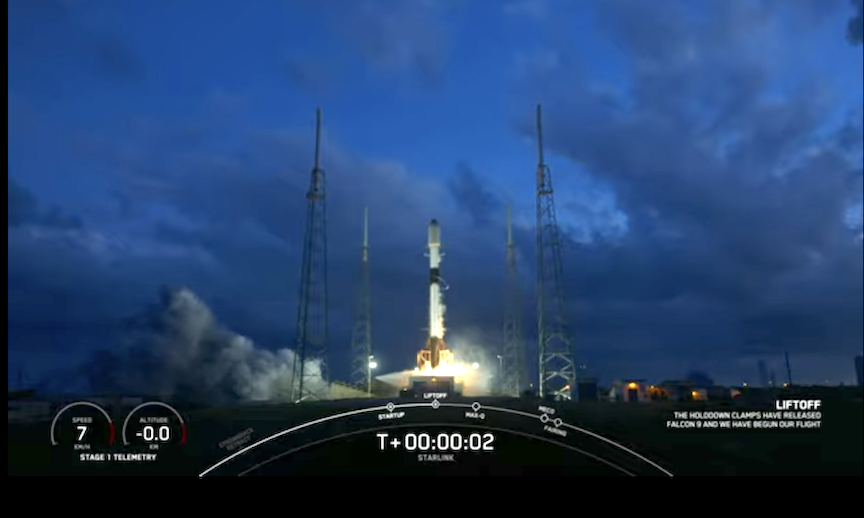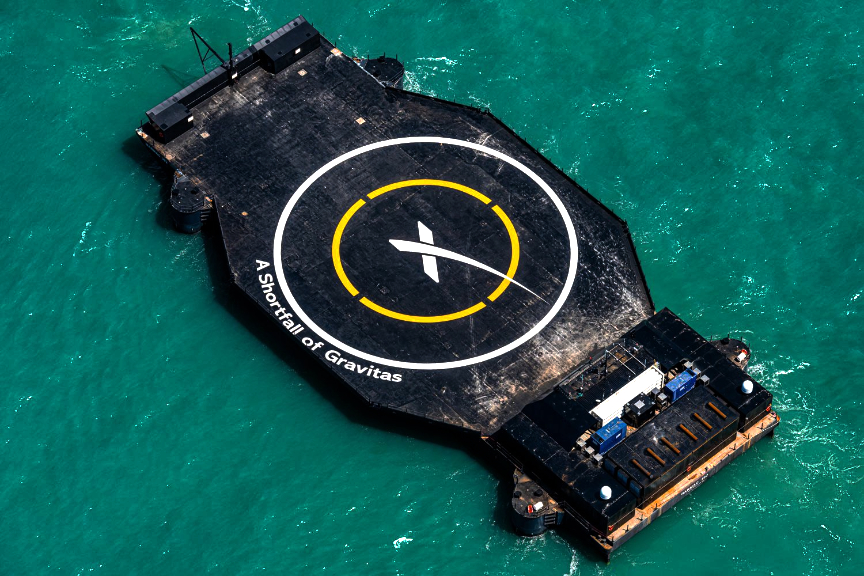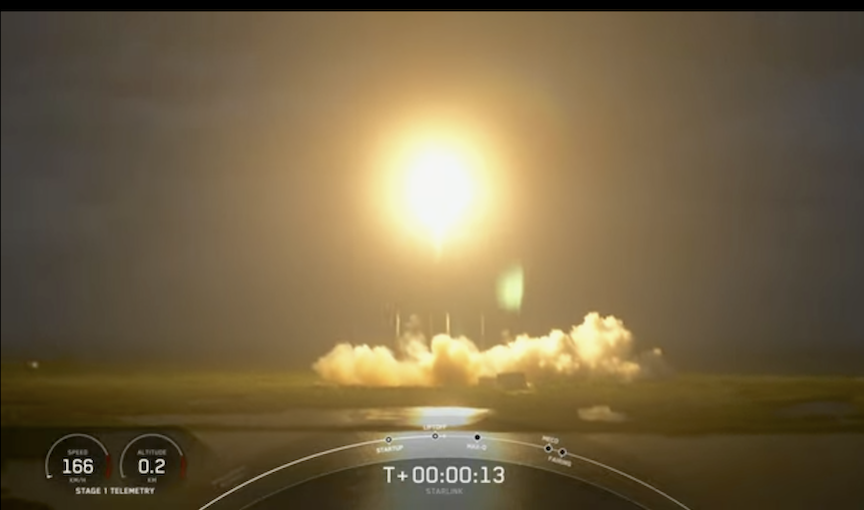
SpaceX‘s Falcon 9 rocket carrying 52 Starlink spacecraft lifted off from Florida’s Cape Canaveral Space Force Station Saturday at 7:32 p.m. EDT (2332 GMT).
Following stage separation, the first stage landed on the A Shortfall of Gravitas droneship stationed in the Atlantic Ocean. The first stage booster supporting this mission previously launched SES-22 and two Starlink missions.

This launch now brings the total to nearly 3,400 Starlink satellites and plans to launch thousands more starting next year when SpaceX will begin launching Starlink Version 2 satellites.

The Version 2 satellites will be much bigger and more capable than the current version. V2 spacecraft will be able to beam connectivity directly to smartphones, and will do so for T-Mobile customers via a project called “Coverage Above and Beyond,” SpaceX founder and CEO Elon Musk announced last month.
